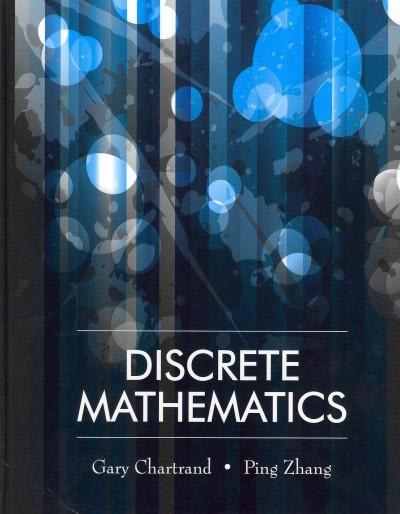Question
The Dice game of Pig can be played with the following rules. Roll two six-sided dice. Add the face values together. Choose whether to roll
The Dice game of "Pig" can be played with the following rules.
Roll two six-sided dice. Add the face values together. Choose whether to roll the dice again or pass the dice to your opponent. If you pass, then you get to bank any points earned on your turn. Those points become permanent. If you roll again, then add your result to your previous score, but you run the risk of losing all points earned since your opponent had rolled. Continue to roll as much as you want. However, once a "1" comes up on either die, your score is reduced to 0, leaving you only with points that you have previously "banked." Furthermore, you must pass the dice to your opponent. The first person to 100 points is the winner.
When a player rolls two dice, the possible outcomes are as follows:
Die #2 roll | |||||||
| Die #1 roll | roll a 1 | roll a 2 | roll a 3 | roll a 4 | roll a 5 | roll a 6 | |
| roll a 1 | 0 | 0 | 0 | o | 0 | 0 | |
| roll a 2 | 0 | 4 | 5 | 6 | 7 | 8 | |
| roll a 3 | 0 | 5 | 6 | 7 | 8 | 9 | |
| roll a 4 | 0 | 6 | 7 | 8 | 9 | 10 | |
| roll a 5 | 0 | 7 | 8 | 9 | 10 | 11 | |
| roll a 6 | 0 | 8 | 9 | 10 | 11 | 12 |
You can see that a player gets 0 points if they roll a 1 on either die. Otherwise their score comes from adding the results of the two dice. There are 25 ways to "successfully" roll the dice and 11 ways to "unsuccessfully" roll the dice, where "success" is not rolling a 1 on either die.
Single Roll
When we take the mean of the 25 successful rolls we get 8. We will assume that on a successful roll, the player earns 8 points.
P(success) = 25/36
P(failure)= 11/36
Value(success) = 8
Value(failure) = 0
What is the expected value for a single roll? ________________________(Round to four decimal places)
Two Rolls
If we chose to pass the dice, then we would bank those points. If we chose to keep rolling, then in order to be successful we would need to roll no 1's twice. However, we would expect to get twice as many points IF we were to roll successfully. This would give us:
P(success) = (25/36)2
P(failure) = 1(25/36)2
Value(success) = 16
Value(failure) = 0
What is the expected value for rolling twice? ________________________ (Round to four decimal places)
More Rolls
As you can see, if we chose to roll even more times, then we could calculate the probabilities and values in a similar way. If we were to roll n times, then we have:
P(success) = (25/36)n
P(failure) = 1(25/36)n
Value(success) = 8n
Value(failure) = 0
What would the expected value be for:
Three rolls? ______________ (Round to four decimal places)
Four rolls? ________________ (Round to four decimal places)
Five rolls? _________________ (Round to four decimal places)
Strategy
Having looked at the five different strategies, which would you choose?
- Roll once before passing
- Roll twice before passing
- Roll three times before passing
- Roll four times before passing
- Roll five times before passing
Why would you choose this strategy?
Step by Step Solution
There are 3 Steps involved in it
Step: 1

Get Instant Access to Expert-Tailored Solutions
See step-by-step solutions with expert insights and AI powered tools for academic success
Step: 2

Step: 3

Ace Your Homework with AI
Get the answers you need in no time with our AI-driven, step-by-step assistance
Get Started


